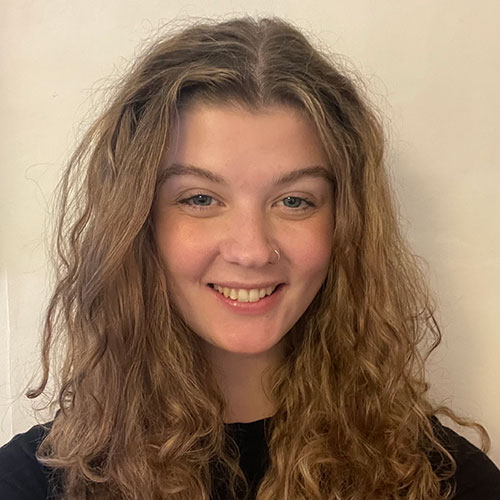Holly Hourston is an Earth Observation Scientist in the Geodesy and Remote Sensing topic, within the Multi-hazards and Resilience challenge area. Her early academic career varied from modelling gravitational wave observations using Bayesian inference, to studying the organic chemistry of meteorites through techniques including GC-MS and X-ray CT. In her role at BGS, she analyses satellite data to study ground deformations due to various geological influences, through applying machine learning and other techniques to combine this with geological, meteorological and environmental datasets. She is developing machine learning algorithms and statistical approaches to automate geological interpretations of ground deformation satellite data. She has other scientific interests in planetary science, hazard monitoring and understanding cascading hazards in vulnerable locations.
- 2023 to present: Earth Observation Scientist in the Shallow Geohazards & Earth Observation team, BGS
- 2022 to 2024: MSc (by Research) Geology, University of Glasgow
- 2022 to 2023: Lab demonstrator, School of Geographical & Earth Sciences, University of Glasgow
- 2017 to 2022: MSci Astronomy & Physics, University of Glasgow
Research interests
- Ground deformation due to geohazards using InSARR – researching, combining and developing coding tools to extract hidden signals in InSAR time series data, over geohazards ranging from volcanic swelling, ground subsidence, earthquakes, and landslides
- Combining satellite data with environmental datasets for effective monitoring and hazard assessment – Such applications include monitoring ground loading from construction, peatland extent/thickness/health, flooding, urban subsidence, coastal processes, groundwater abstraction
- Multi-hazard interactions and accelerations due to climate change – many geohazards and their combined effects with other hazards are increasing in severity or spatial extent, as well as frequency in time
ORCID: 0009-0003-7195-4266
Key papers
- Guerriero, L, Van Wyk de Vries, M, Hourston, H, Novellino, A, Calcaterra, D, Di Martire, D, Sciarra, N, and Francioni, M. 2025. Earthquakes and rainfall accelerating deep-seated landslides toward failure: significance of combined use of InSAR and feature tracking in landslide analysis. Landslides, 22 (10), pp 3169–3183.
- Hourston, H, Álvarez, I G, Bateson, L, Hussain, E, and Novellino, A. 2024. Automated INSAR time-series analysis tool for geological interpretations in near-real time. In IGARSS 2024–2024 IEEE International Geoscience and Remote Sensing Symposium (pp 9971–9974). IEEE.
- Novellino, A, Arnhardt, C, Banks, V, Fleming, C, Holland, L, Hourston, H, Kirkham, M, Mills, E, Smith, K, Bampousis, K, and Kontogianni, V. 2024. Earth observation analysis.
- Python programming and data analysis
- Bayesian statistics
- Time series analysis of environmental data
- Statistical analysis
- ArcGIS Pro
- GC-MS
- SEM-XCT
- Public engagement
- Committee member of the Geological Remote Sensing Group (the Geological Society of London & the Remote Sensing and Photogrammetry Society)
- Member of the Scottish Alliance for Geoscience, Environment and Society


